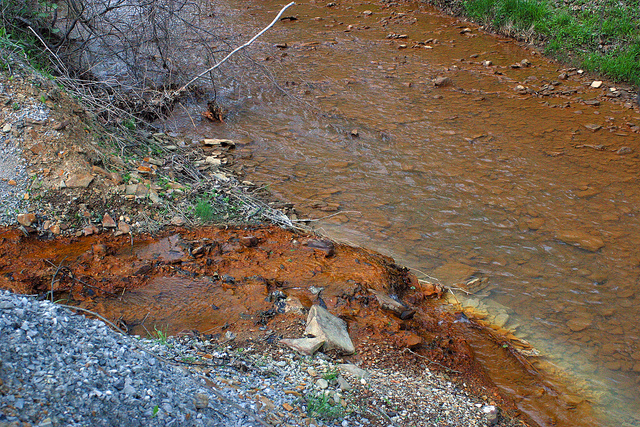Environmental Issues in Kentucky

Far and away, Kentucky’s most pressing environmental issues are related to mining. Two types of mining take place in Kentucky, underground and surface (also known as strip or mountaintop removal), with surface mining being the most environmentally devastating. Although a recent uptick in regulations has dramatically cut the number of surface mines in Kentucky, surface mining is far from extinct.
In surface mining, mountaintop blasting is used to remove the sometimes hundreds of feet of rock and soil that exist overtop a mine seam. Before the blast, the mountains are usually completely logged. In the past, the overburden (or what remained of the mountain after the blast) was deposited in valleys, creating valley fills. In the process, much of the overburden ended up dumped into headwater mountain streams, polluting the water and even sometimes stopping it up. An EPA report estimates that between 1985 and 2001, 724 miles of Appalachian streams were covered by overburden.
Newsletter Signup
By clicking ‘Sign Up,’ I acknowledge that I have read and agree to Hachette Book Group’s Privacy Policy and Terms of Use
Current regulations require that mines be covered with the overburden and the mountain reclaimed once the mine’s resources are exhausted. How well that is done is a matter of debate. Proponents of coal mines point to the many successful restoration projects. In Eastern Kentucky, for example, many people credit the mines with providing them flatland for development, a rare commodity. Golf courses, parks, government buildings, office complexes, and wildlife management areas have all been located on reclaimed surface mines. Opponents often argue that the plants used to reclaim surface mine sites are non-native and invasive.
Another environmental danger introduced by coal mines are slurry ponds, storage sites for the billions of gallons of toxic waste created by mining. In October 2000, a 2.2-billion-gallon slurry pond that belonged to Massey Energy failed and sent 300 million gallons of coal sludge into Coldwater and Wolf Creeks. This spill was 25 times larger than the Exxon-Valdez oil spill.

Kentucky’s waterways are threatened by more than the coal industry. Elevated levels of mercury and PCBs (polycarbonate biphenyls) have been regularly found in Kentucky lakes and rivers, with the Ohio River one of the worst affected. Point source discharge, agricultural runoff, inappropriate waste disposal, urban runoff, resource extraction, and habitat modifications all lead to contamination. Some bodies of water also suffer from fecal coliform pollution caused by the illegal straight pipe discharge of sewage. The Division of Water provides updates on safe fish consumption as well as swimming warnings. There is some good news, however, especially for those who hate to add to our waste problem through the consumption of bottled water. In 2013, Louisville’s drinking water was named the best-tasting water in the country by the American Water Works Association.
According to the Air Quality Index, Kentucky’s overall air quality is good, although people with respiratory illnesses should be aware that Louisville and other Ohio Valley cities and towns can be hard on the lungs in the peak of summer. Industry emissions, car emissions, and other air pollutants can become trapped in the valley, leading to high ozone levels. News reports as well as electronic interstate signs display ozone alerts on days when air pollution is bad. Louisville also regularly shows up on lists of the worst cities for allergies, especially spring allergies.
Excerpted from the Second Edition of Moon Kentucky.
From the Pacific to the Atlantic, through prairies and bayous to snow-capped mountains, uncover the best of the US with Moon USA State by State.
Newsletter Signup
By clicking ‘Sign Up,’ I acknowledge that I have read and agree to Hachette Book Group’s Privacy Policy and Terms of Use
Pin it for Later


